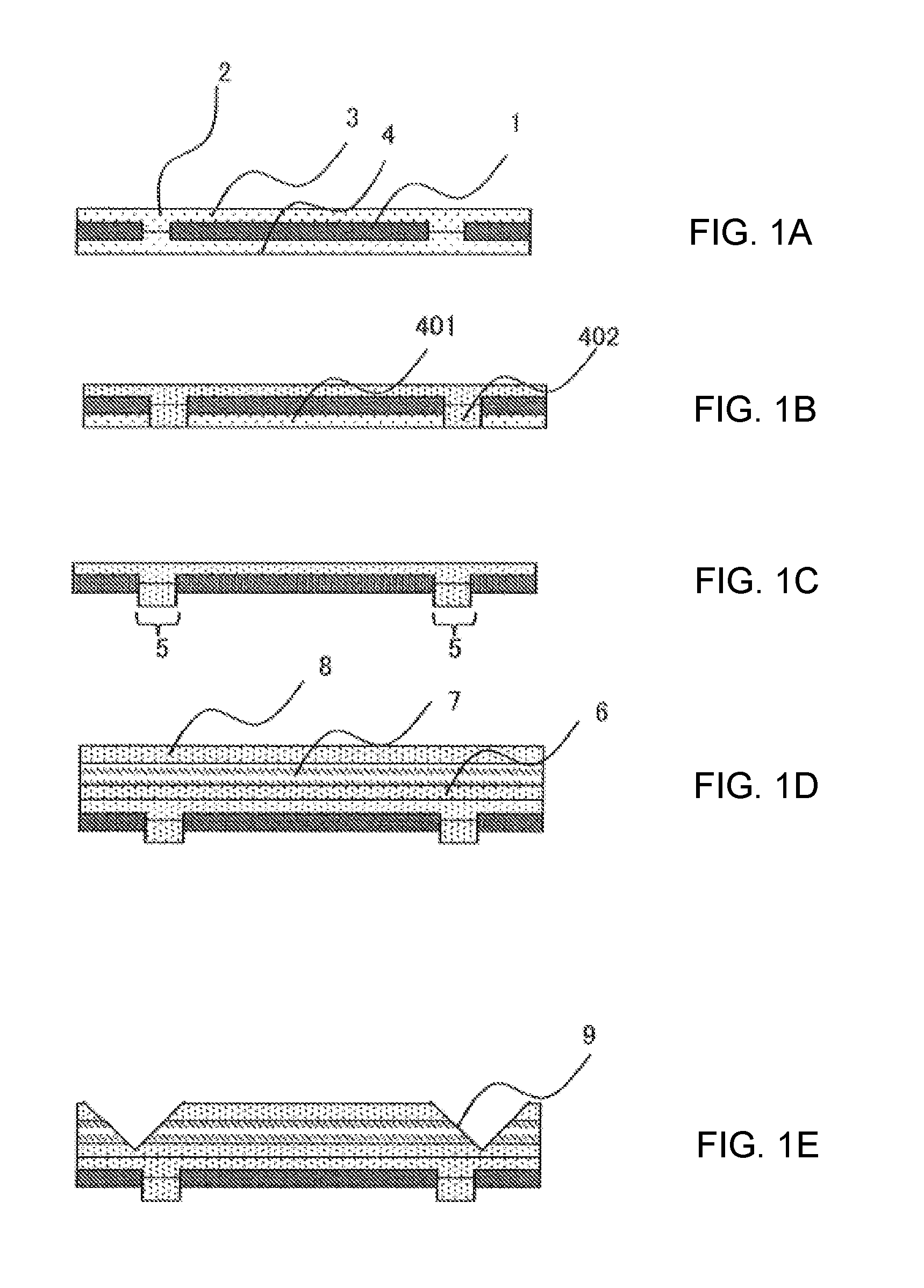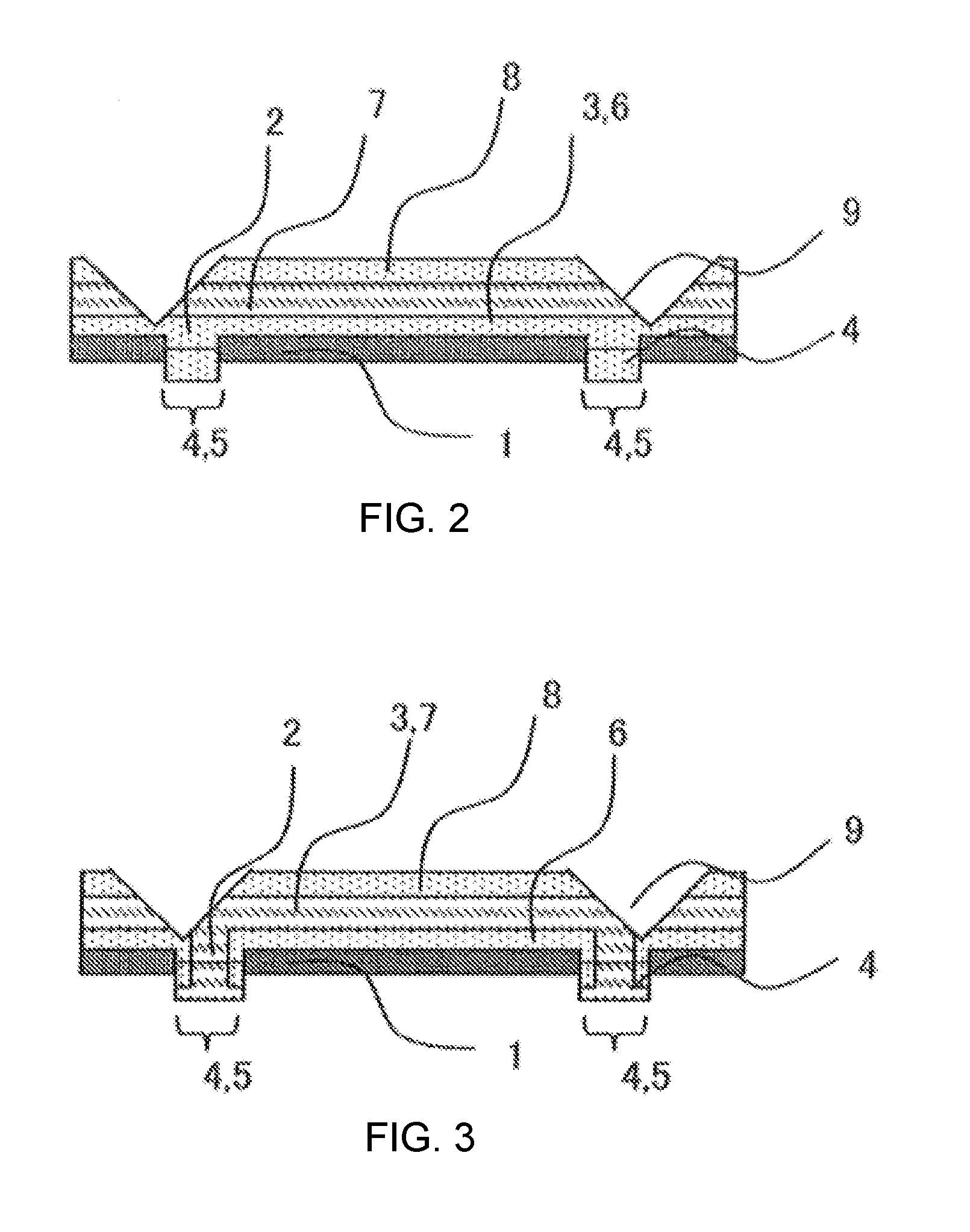Optical waveguide and manufacturing method thereof
a technology of optical waveguides and manufacturing methods, applied in the direction of optical waveguide light guides, optical fibres with multilayer cores/claddings, instruments, etc., can solve the problems of complex work to produce such optical waveguides, deterioration of optical transmission losses, etc., to reduce the spread of light signals, reduce optical transmission losses, and achieve efficient production
- Summary
- Abstract
- Description
- Claims
- Application Information
AI Technical Summary
Benefits of technology
Problems solved by technology
Method used
Image
Examples
example 1
Preparation of Resin Film for Forming a Clad Layer
Preparation of Base Polymer (A): (Meth)Acrylic Polymer (A-1)
[0180]46 parts by mass of propylene glycol monomethyl ether acetate and 23 parts by mass of methyl lactate were weighed and placed in a flask equipped with an agitator, a condenser, a gas introduction tube, a dropping funnel and a thermometer, and stirred with nitrogen gas introduced therein. The liquid temperature was increased to 65° C. Subsequently, a mixture of 47 parts by mass of methyl methacrylate, 33 parts by mass of butyl acrylate, 16 parts by mass of 2-hydroxyethyl methacrylate, 14 parts by mass of methacrylic acid, 3 parts by mass of 2,2′-azobis(2,4-dimethylvaleronitrile), 46 parts by mass of propylene glycol monomethyl ether acetate and 23 parts by mass of methyl lactate was added dropwise for 3 hours and stirred at 65° C. for 3 hours, then at 95° C. for 1 hour to obtain the (meth)acrylic polymer (A-1) solution (solid content: 45 mass %).
Measurement of Weight Ave...
example 2
[0199]Except for using a transparent resin layer 3 with a thickness of 25 μm as the lower clad layer 6, an optical waveguide with a mirror was prepared in the same manner as Example 1 (see FIG. 2).
[0200]The total optical transmission loss of the two mirrors of the obtained optical waveguide was 2.00 dB.
example 3
[0201]In Example 2, the resin film for forming a clad layer with a thickness of 15 μm was used as the transparent resin layer 4. Ultraviolet rays (wavelength: 365 nm) were delivered at a light intensity of 0.3 J / cm2 through the negative photomask with the respective centers of the openings (80 μm) as the light shielding parts to expose the transparent resin layer 3 combined with the lower clad layer 6 and the transparent resin layer 4. After the respective centers of the openings were etched, the laminated body was washed with water, irradiated with ultraviolet rays at a light intensity of 3.0 J / cm2 from the lower clad layer 6 side with the above-mentioned exposure machine, and dried and cured by heating at 170° C. for 1 hour.
[0202]Then, a resin film for forming a core layer from which the protective film was removed was laminated to the lower clad layer. A resin film for forming a core layer with a thickness of 25 μm which is the same as that described above was laminated to the ba...
PUM
 Login to View More
Login to View More Abstract
Description
Claims
Application Information
 Login to View More
Login to View More - R&D
- Intellectual Property
- Life Sciences
- Materials
- Tech Scout
- Unparalleled Data Quality
- Higher Quality Content
- 60% Fewer Hallucinations
Browse by: Latest US Patents, China's latest patents, Technical Efficacy Thesaurus, Application Domain, Technology Topic, Popular Technical Reports.
© 2025 PatSnap. All rights reserved.Legal|Privacy policy|Modern Slavery Act Transparency Statement|Sitemap|About US| Contact US: help@patsnap.com



